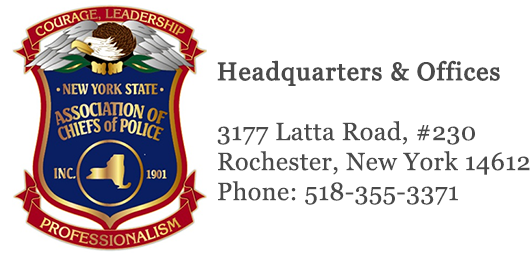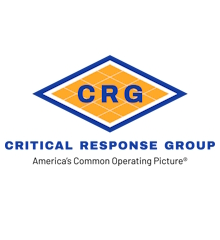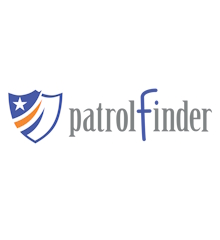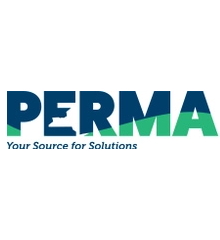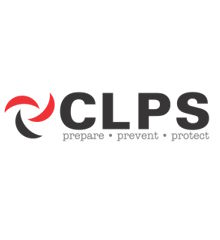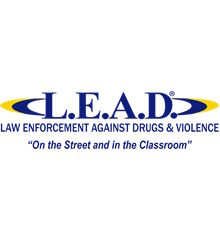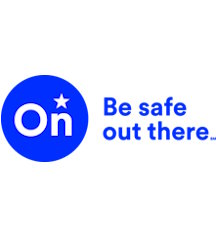Law Enforcement’s Role in a Public Health Crisis
By Chief Stuart Cameron
Suffolk County PD
Recently another emerging virus disease with origins outside the United States has garnered a great deal of attention within our nation. Like the Ebola Virus Disease, more commonly referred to as simply Ebola did several years ago; the Novel Coronavirus has recently captured the attention of the American public. The Novel Coronavirus emerged from outside the United States in a region of China late last year; much like two other Coronaviruses, SARS (Severe Acute Respiratory Syndrome) did in 2003 and MERS (Middle Eastern Respiratory Syndrome) did from the Middle East in 2012. Coronaviruses are a large family of viruses that affect the respiratory system and include the common cold.
While much research remains to be done on the origins of this new virus, it is clear that transmission of the virus is similar to that of the common cold, by being exposed to droplets when infected people talk, sneeze or cough. Additionally the virus may survive on surfaces so indirect exposure could also be possible from touching these surfaces. It appears as though this new Coronavirus, like the flu, can be transmitted during its incubation period, before an individual exhibits any systems making efforts to contain the virus more challenging. Accordingly screening people for fever as they enter the county may not be as effective of a control measure as it was with Ebola. The incubation period for the Coronavirus could be up to fourteen days, meaning seemingly healthy people could be moving around and potentially spreading the virus to others without being aware that they are ill. A handful of cases of the Coronavirus had emerged in the United States as of January; however an important milestone was crossed when a human to human transmission occurred within our county.
Fortunately initial indications are that the fatality rate for this newly emerging Coronavirus is considerably lower than other Coronavirus that have recently emerged, such as MERS or SARS. MERS kills roughly one third of those who become infected with it, and SARS about one in ten of those infected. Initial estimates for the lethality of the Novel Coronavirus are from one to three percent of those who become infected. This compares to about one death in one thousand for the seasonal Flu and about a forty percent lethality rate for Ebola virus.
Like Ebola, MERS and SARS, the Novel Coronavirus is believed to be Zoonotic, meaning that the disease can be transmitted from non-human animals to humans. In the case of all four of these diseases the origin is believe to be from bats. Recently there has been an increase in emerging infectious diseases in the world. The majority of these illnesses are classified as zoonotic. Many scientists blame this rise on man’s increasing disintegration of natural ecosystems through hunting, logging and other activities. These actions expose humans to new organisms, some of which can cause disease. When combined with the ease of worldwide travel the impact of these newly emerging infectious diseases may increasingly affect wider areas of the globe.
While clearly any public health crisis is primarily a task relegated to our public health system, it also impacts directly upon law enforcement in a significant way, especially if the law enforcement agency provides any type of medical support or response. Law enforcement personnel must remember that the public may react based more upon fear than upon science. Fear will likely be exacerbated when the virus causing the illness is an emerging infectious disease that the public has little knowledge about or experience with. Fear can be heightened due to the widespread media attention devoted to any emerging illness. Few Americans fear influenza although it is the eighth leading cause of death, when combined with the deaths caused by flu related pneumonia, resulting in over 53,000 deaths in 2010 alone.
Concern about influenza is so low that less than half of all Americans even bother to get a flu shot each year. This is most likely due to the fact that people have become accustomed to the flu, clearly understand how it is spread and are aware of the potential consequences involved in becoming infected. Many people may have even had the flu and successfully recovered from it or know someone who has. People tend to fear that which they do not understand. In many cases the consequences of a disease outbreak may be dwarfed by the epidemic of panic that it causes.
Most law enforcement agencies train their members to help prevent them from exposure to blood borne pathogens. This training usually includes the use of personal protective equipment (PPE) including gloves, masks and eye wear. It is incumbent upon law enforcement agencies to do their utmost to prevent their staff from becoming ill. Disease is spread through a variety of mechanisms which are unique to each individual illness. Like the common cold the Novel Coronavirus spreads fairly easily through exposure to airborne droplets, either directly or from surfaces upon which they have been deposited. These droplets are created when infected people talk, cough or sneeze. Ebola on the other hand is spread by exposure to the bodily fluids of infected people or the infected deceased. Selecting the proper PPE to prevent infection is a key consideration. While Ebola is not an aerosolized hazard like the Coronavirus, certain bodily fluids can readily infect people, even in minute quantities, if they enter the body. Therefore Ebola is not very contagious, but it is highly infectious, while the Coronavirus is both highly contagious and infectious. Much like a hazardous materials response, the PPE recommended for potential Ebola exposure called for completely covering all skin surfaces, with fluid impervious material, and that multiple pairs of gloves be worn. The type of full body protection is unnecessary for Coronavirus. Knowing what PPE to Purchase is only one step in protecting personnel, promptly placing orders to obtain an adequate amount of PPE is another concern. When masks, gloves and other protective equipment come into high demand, obtaining adequate amounts can become challenging.
In order to provide sufficient protection personnel must be trained in how to properly put PPE on, a process calling donning and also how to take it off, known as doffing. Training to properly don and doff PPE is part and parcel to the preparation for medical care and hazardous material workers. In the case of Ebola however, the level of PPE required was extremely stringent for health care workers. This level of PPE can also take a toll on those wearing it, which may translate into the need for increased staffing levels when compared to normal patient care.
Clearly it can be challenging to train and equip large numbers of first responders to properly don and doff PPE and the initial training is just step one in the process. Regularly scheduled refresher training is necessary to maintain proficiency, as is monitoring to ensure compliance. Sending someone into a potentially dangerous environment without adequate preparation is not a good idea.
Once identified personnel have been equipped and properly trained to utilize PPE, how will they know when to deploy it? Will these select infectious disease responders patrol continuously wearing this garb? Many 911 public safety answering points, PSAPs, have tools called Emerging Infectious Disease Systems. These tools provide a prescripted series of questions to assess the potential that someone calling for medical care may be at risk of being infected with a given emerging disease. This interrogation is comprised of two main lines of questioning, inquiry about symptomology and the potential for exposure. The questions regarding symptomology are designed to see if the patient may have any of the common symptoms of the infectious disease in question. The exposure questions generally inquire about recent travel to the impacted area or potential exposure to an infected human or non-human animal. Certain animals are associated with the transmission of various diseases, such as pigs with swine flu or birds with avian flu. If the proper symptoms are present, along with a potential risk of exposure, the tool can be used to alert responding personnel of a potential risk for exposure. In this case, PPE should be donned prior to encountering any potentially infected individuals. In the case of the Novel Coronavirus, maintaining a distance of at least six feet from the patient can allow a safe in-person assessment of symptoms and travel history, which could then lead to donning PPE when necessary.
Even law enforcement agencies, who desire to minimize their role in an infectious disease outbreak, and notionally leave the response to their Department of Health, may need to get involved in isolation, quarantine or the distribution of medicine or other medical supplies. Isolation separates contagious sick people from those who are not sick to prevent the spread of illness. Quarantine separates and restricts the movement of people who may have been exposed to a contagious disease to see if they become sick. Clearly the isolation of people who are already sick and who present a more well-defined risk is far more clear-cut than the quarantine of people who are in jeopardy of becoming sick. The quarantine of those who may have been exposed is likely to be controversial, but clearly valuable in a virus like the Novel Coronavirus wherein virus shedding can occur prior to symptoms manifesting. Many have heard of Typhoid Mary, but may not be aware that she was an asymptomatic carrier of Typhoid Fever who made many people sick through her work as a cook. Mary Mallon, aka Typhoid Mary, had to be forcibly isolated to prevent her from making others sick.
The need to forcibly isolate or quarantine non-compliant individuals deemed to pose a risk of spreading an infectious disease may likely involve law enforcement in some capacity, much as it did with Mary Mallon in the early twentieth century. Prior to initiating this process, clear legal authority, guidelines and procedures should be developed or reviewed. For example, who can order isolation or quarantine, public health alone or would it require a court order? How would it be enforced and what violation of law would be charged? Clearly no agency would want to arrest an infectious disease carrier and bring them into a police facility. How would they be transported if they needed to be relocated? These and other practical questions need to be addressed in advance to protect law enforcement officers from unnecessary exposure.
The added responsibilities that law enforcement agencies would likely face during a severe public health crisis would be at a time when a department’s staff would also likely be depleted due to illness, furthering increasing the burden. Reassuring staff members that an agency has a well throughout plan to protect them from becoming ill while they perform their duties is also critical. Staff members who are concerned with becoming ill themselves or with bringing illness home to their families will be much less effective.
Many large public health outbreaks may exceed the capacity of local health care and exhaust regional supplies. If this were to occur it is possible that the Strategic National Stockpile or SNS may be activated. The SNS is a large cache of medicines and medical supplies maintained by the Centers for Disease Control. These supplies contain enough equipment and drugs to protect the American public during a public health emergency, whether from natural origins or from a bio-terrorism attack. Since these supplies will need to be brought into the affected area from outside, security must be provided to ensure the integrity of the shipment. Once the supplies have arrived and been broken down they will be dispensed to the public at locations called points of distribution or PODs. Law enforcement will be enlisted to provide security at PODs to maintain order. One might only look toward the chaos that occurred when gasoline or food is in short supply after a Hurricane or other natural disaster to see the necessity for this type of operation. These medical supplies may mean the difference between life and death or the public may perceive that they do. In extreme cases, large public health emergencies have the potential to generate civil unrest, especially if the public feels that there may be inadequate amounts of medical supplies for themselves or their families.
Law enforcement support may also be enlisted to track the movements of those who have been infected and determine who may have been exposed. While this is primarily the responsibility of public health, it would be hard to argue that law enforcement officers may possess unique resources to facilitate this endeavor, such as access to databases or electronic investigative tools unavailable to health agencies.
Emerging disease can also cross paths with law enforcement when the police are requested to check on the welfare of an individual or respond to an unattended death. In the case of those who have died as a result of Ebola, their corpses are highly contagious. Simply coming into contact with a body to verify if it has a pulse without the use of PPE may be enough to cause infection.
Law enforcement agencies should prepare in advance for a public health emergency just as they would for any other type of crisis. One component of this preparation is training their staff to know how they can continue to work without becoming infected or carrying infection home to their families. This type of training is crucial as it may help to mitigate work force attrition due to the fear of infection. Preparing to respond to crisis situations should include planning for all types of hazards, whether they are manmade or natural, weather related or health related. Emerging infectious diseases are but one crisis looming large on the radar screen as we live our lives in the twenty-first century. Unfortunately law enforcement agencies will no doubt play a role in them all. Implementing multifaceted, all hazard, advance planning will greatly contribute to confidence in an agency among the public and its employees.
